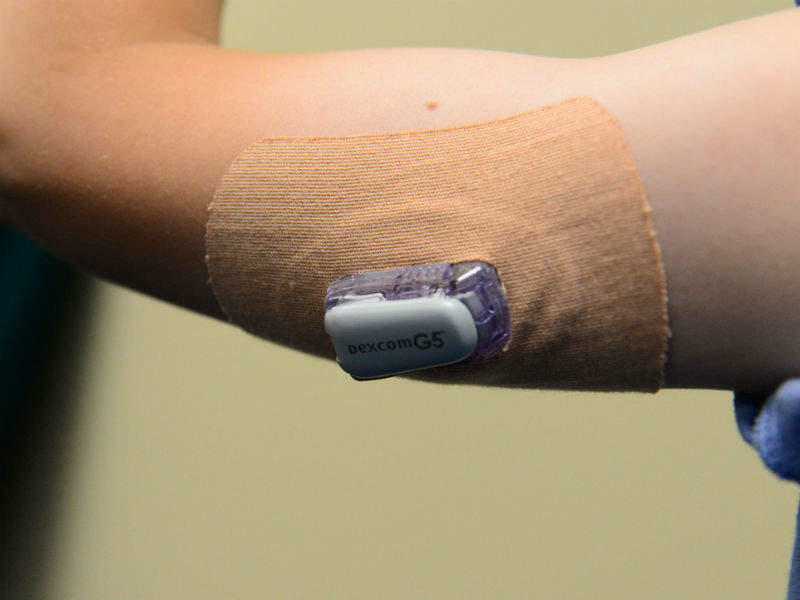
Wearable Health Technology Trends: Shaping the Future of Healthcare
As the wearable health technology market continues to grow it can be hard to distinguish the trendy consumer devices from those with useful medical applications. From the debate over smart watches to the latest wearable MRI scanner, here’s a roundup of some of the most talked about wearables. Many of them are pointing the way to the future of patient care.
Smart watches

In the ever growing wearable health technology market, Fitbit is arguably the most well-known brand. Extremely popular with consumers, fitness tracking Fitbit watches are not a favourite among medical professionals due to claims that the patient data collected is not accurate enough for medical assertions to be made. However, Fitbit remains determined to break into the healthcare market and partnered with Google earlier this year to improve the ability of its devices to share data with medical professionals. The fitness wearable company has adopted Google Cloud for Healthcare application programming interfaces (APIs) in a bid to make data sharing more secure.
The more medically trusted smart watches include the FDA-approved Empatica smartwatch, called Embrace, which is designed to monitor seizures. The AI-powered device uses advanced machine learning to check for grand mal or generalised tonic-clonic seizures and can send instant alerts to caregivers.
Credit: Fitbit.
Glucose monitors

Continuous glucose monitors (CGMs) are becoming increasingly popular with diabetic patients, who can wear the devices day and night to keep an eye on their glucose levels. The popularity of the devices lies in the fact that a patient can view their glucose levels with a quick glance and only have to use a finger prick blood test twice a day to check that the readings on both devices are similar.
Real-time glucose levels help patients make more informed choices about the types of food, physical activities and medication they require throughout the day. CGMs work by using a tiny sensor inserted under a patient’s skin which tests interstitial glucose levels every few minutes and sends this information to a monitor or smartphone. Patients receive alerts when their glucose levels need to be adjusted.
Devices like the Dexcom G6 are popular because they claim to negate the need for patients to use finger sticks.
Credit: Dexcom.
Diagnostic wearables

No matter how advanced healthcare is becoming there is always an occasion when healthcare professionals just aren’t sure what is wrong with a patient. This is where diagnostic wearables come in. Australian National University (ANU) researchers recently developed optical sensors that can be used in wearable medical devices to diagnose various diseases in real-time. The sensors measure very small concentrations of metabolite gases, which are emitted through human skin and breath, and use these measurements to detect biomarkers which can indicate a variety of diseases.
Other new diagnostic wearables include body-worn sensors that can assess gait and potentially detect Alzheimer’s disease early. Diagnostic technologies like this definitely have a future as the healthcare industry continues to look for ways of diagnosing chronic conditions earlier.
Credit: Lannon Harley/ANU.
Cardiac monitors

Wearable health technology for measuring heart rates can come in many forms, such as smart watches and arm bands, but a lot of the devices designed for more serious medical purposes than everyday fitness tracking are worn as a patch on the chest. Such devices include iRhythm Technologies’s Zio patch, which is powered by the world’s largest heart rhythm database and curated by expert cardiac technicians. The company says its device can produce maximum patient compliance as it requires little effort from users and minimum lifestyle disruption to maintain an uninterrupted signal.
However, not all wearable heart monitors are thriving in the medical industry market. Earlier this year, Medtronic discontinued marketing for its SEEQ Mobile Cardiac Telemetry (MCT) System so it could concentrate on supporting an insertable cardiac device instead.
Credit: Medtronic.
Wearable imaging

A new addition to the wearable health technology industry, wearable imaging devices could set a precedent for the future of medical scans. Earlier this year, a new generation of wearable brain scanner was created as part of a five-year Wellcome Trust-funded project that aims to revolutionise human brain imaging. The scanner can measure brain activity while people make natural movements, which could improve research and treatment for patients who can’t use traditional fixed MEG scanners, such as young children with epilepsy and patients with neurodegenerative disorders.
US researchers led by NYU School of Medicine recently created a new glove-shaped MRI component that can be integrated into garment-like detectors for the clear imaging of moving joints. The glove has potential applications for aiding in the diagnosis of repetitive strain injuries.
These types of wearable scanners are so new that further research and development is needed before their future and relevance in the healthcare industry can be fully determined.
Credit: Wellcome Trust.



